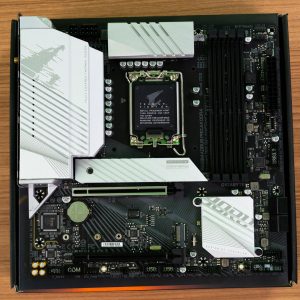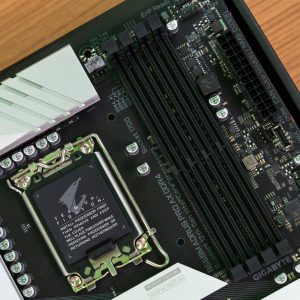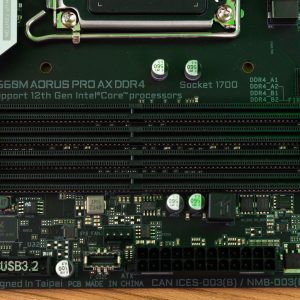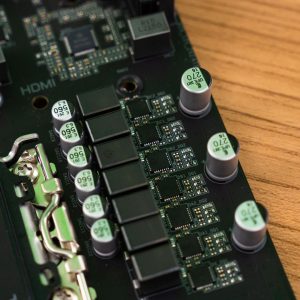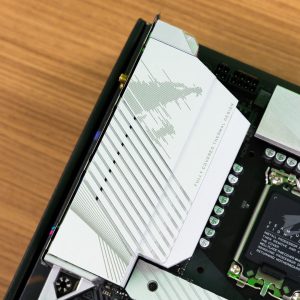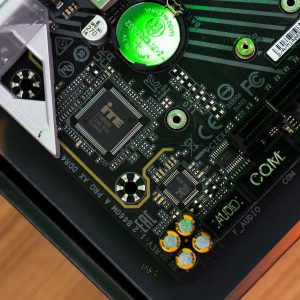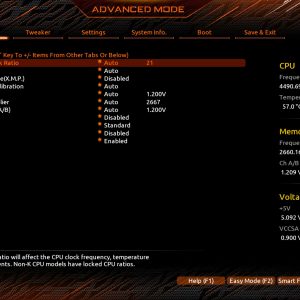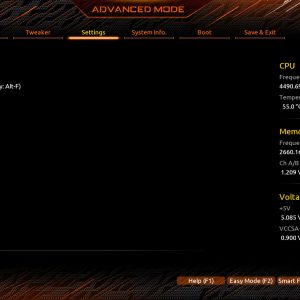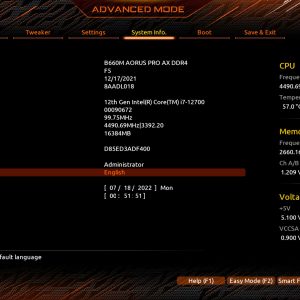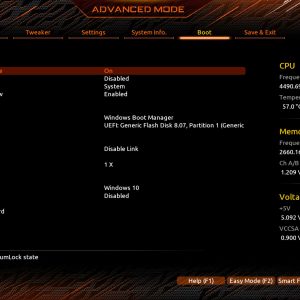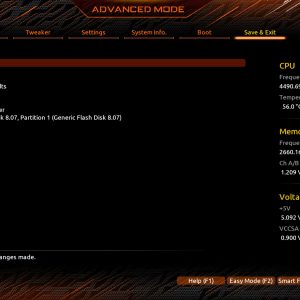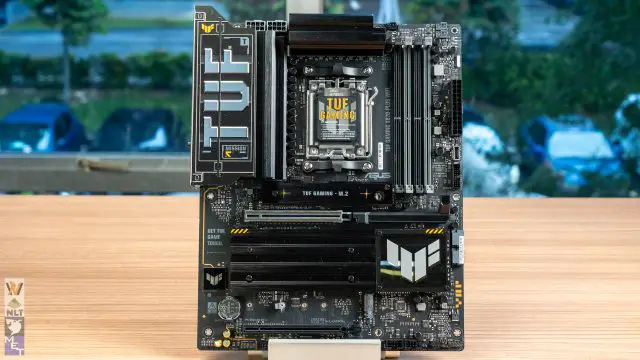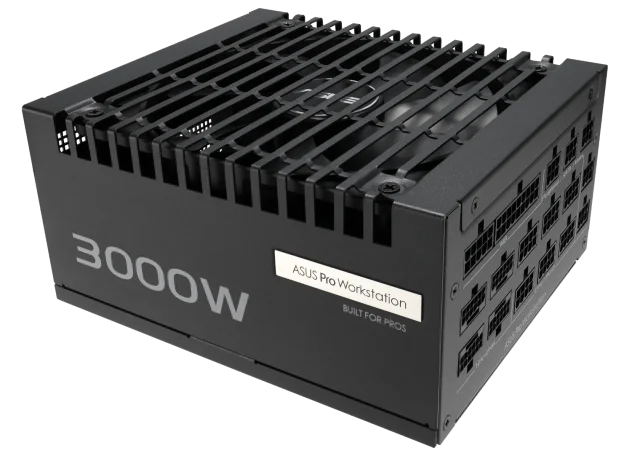With Intel announcing its mid-tier B660 chipset, owning a 12th gen Core processor system has become slightly affordable as compared to owning a system with a full-fledged Z690 chipset motherboard. This time, we’ll be taking a quick look at an affordable B660 chipset motherboard from Gigabyte, the B660M AORUS PRO AX DDR4. Let’s see what kind of performance can we expect from this motherboard.
Specifications
| CPU support | Intel LGA 1700 |
| Chipset | Intel B660 Chipset |
| Memory |
|
| Graphics | Integrated Graphics Processor-Intel® HD Graphics support:
|
| Expansion slots |
|
| Storage | CPU:
Chipset:
|
| Network |
|
| Back I/O Ports |
|
| Audio |
|
| Internal Connectors |
|
| H/W Monitoring |
|
| Unique Features |
|
| Form factor | Micro ATX Form Factor (244mm x 244mm) |
Overview
The B660M AORUS PRO AX DDR4 ships in simple packaging, along with the accessories for some basic necessities such as the SATA cables, Wi-Fi antenna, user manual, and the screws for M.2 SSD. From the user manual, we can see that both the B660M AORUS PRO AX and B660M AORUS PRO have very similar specifications, the only difference is the supported memory.
According to the specifications, the B660M AORUS PRO AX DDR4 can support up to 128GB DDR4 memory with frequency up to DDR4-5333. Though the memory frequency is heavily dependent on the silicon quality of the memory modules and CPU used.
For the power design, B660M AORUS PRO AX DDR4 comes with a rather beefy 12+1+1 phase power design which consists of the NCP302155, NTMFS4C10N, and NTMF4C06N MOSFETs from onsemi. The main 12 phase features the NCP302155 that can handle 60A each, while the remaining phases for the integrated GPU can handle 50A each.
To handle the thermal output, the B660M AORUS PRO AX DDR4 is equipped with a set of heatsinks for the VRMs, M.2 SSD, and the motherboard chipset. Unlike the higher-end Z690 motherboards with aluminum fins array heatsink, the heatsink on the B660M AORUS PRO AX DDR4 is the aluminum block type that is commonly seen on motherboards in the same category – simple enough but it’ll still get the job done.
For the onboard audio solution, the B660M AORUS PRO AX DDR4 has the Realtek ALC897 codec and four Nichicon audio capacitors. As Gigabyte didn’t equip PCIe 5.0 support on its B660 chipset motherboards, the highest you’ll get here is PCIe 4.0 from the CPU, which is on the first PCIe x16 slot. The other PCIe x16 slot comes from the chipset, which operates under PCIe 3.0 x4.
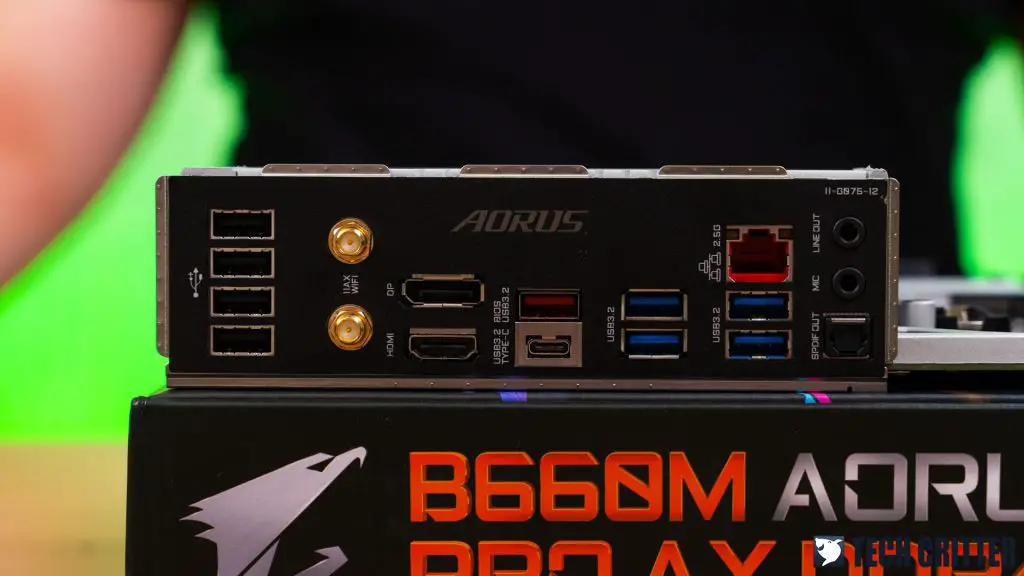
The rear IO seems pretty reasonable, especially the number of USB ports it has. Apart from the vast amount of USB ports, the B660M AORUS PRO AX DDR4 also comes with basic audio jacks and SPDIF support, Wi-Fi 6 with Bluetooth 5.2, and 2.5GbE LAN for connectivity.
BIOS Interface
Test System
| CPU | Intel Core i7-12700 / Intel Core i9-12900K |
| Motherboard | GIGABYTE B660M AORUS PRO AX DDR4 |
| Memory | XPG SPECTRIX D50 Xtreme DDR4-4800 |
| Graphics Card | NVIDIA GeForce RTX 3080 |
| Power Supply | Enermax MaxTytan 1250W |
| Primary Storage | PNY XLR8 CS3040 |
| Secondary Storage | WD Black 6TB |
| CPU Cooler | Intel 12th gen LGA1700 Stock Cooler |
| Chassis | Cooler Master MasterFrame 700 |
| Operating System | Windows 11 64bit |
Thermals
Starting off with the thermals, we did a quick system stress test to see how well can the heatsink hold up with the system on load. Apart from the Intel stock cooler that is not doing so well with our Intel Core i7-12700, the overall thermal it’s looking pretty reasonable so far for the B660M AORUS PRO AX DDR4.
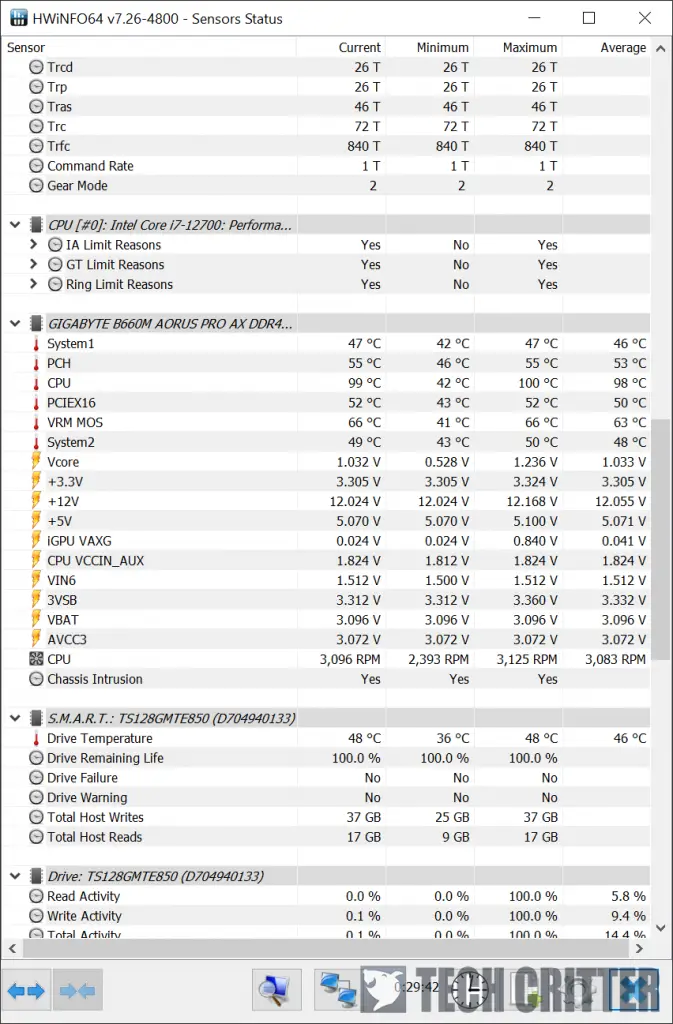
Memory Overclocking
As CPU overclocking is not an option on the B660M AORUS PRO AX DDR4, our focus this time will be on memory overclocking. The memory overclocking headroom can vary by the memory modules and CPU used, but going beyond DDR4-3466 on gear 1 with a non-K processor is totally impossible due to the CPU limitation and can result in instability during operation. So your only solution to go beyond DDR4-3600 without hitting the system agent voltage limit is to go with gear 2.
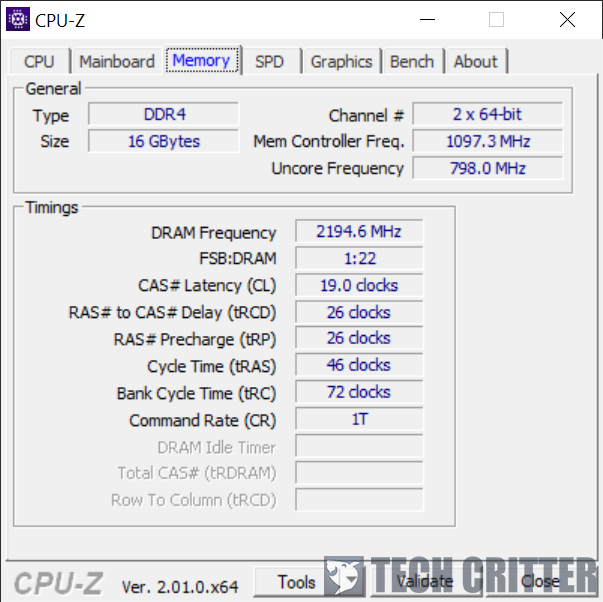
The highest memory frequency we’re able to achieve while maintaining system stability throughout various tests is at DDR4-4400, which is still far from the DDR4-5333+ stated in the specifications. As for how much performance gain you can get from this, you can refer to the game benchmark result below.
Games Benchmark
Moving on to the games’ benchmark, we’ve done some tests with a few selected titles just to see how much of a gain we can get from just the adjustments on the memory settings.
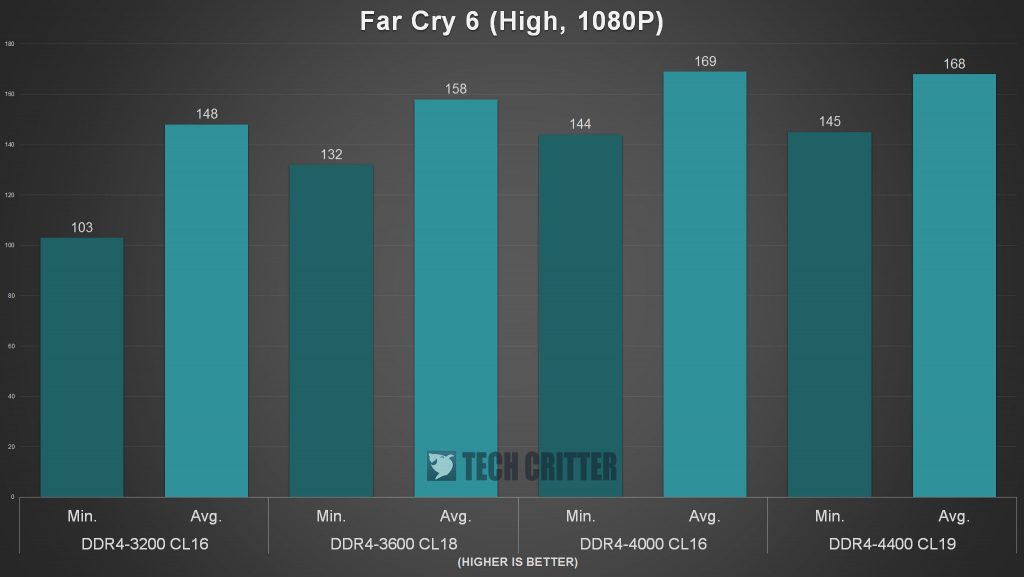
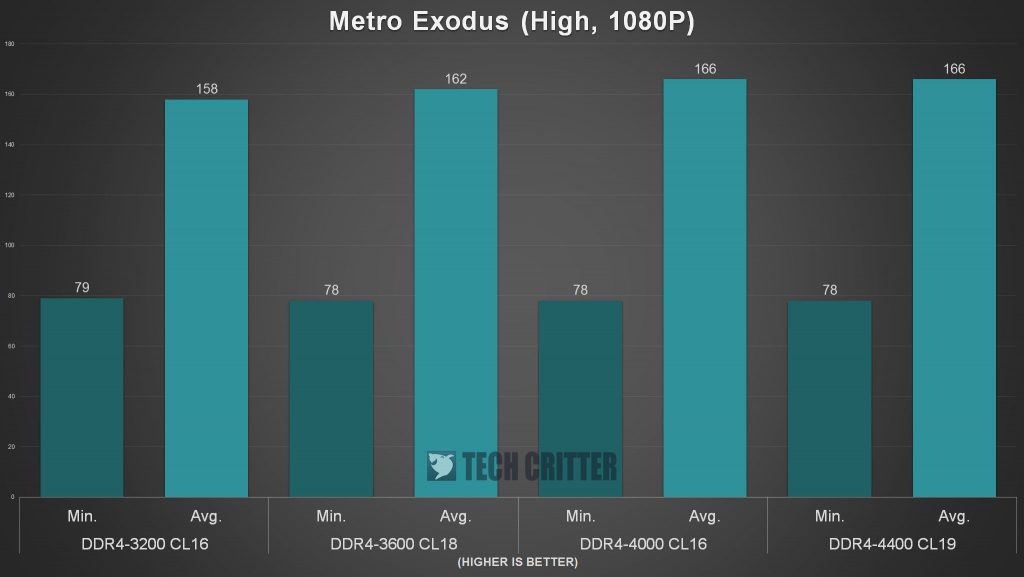
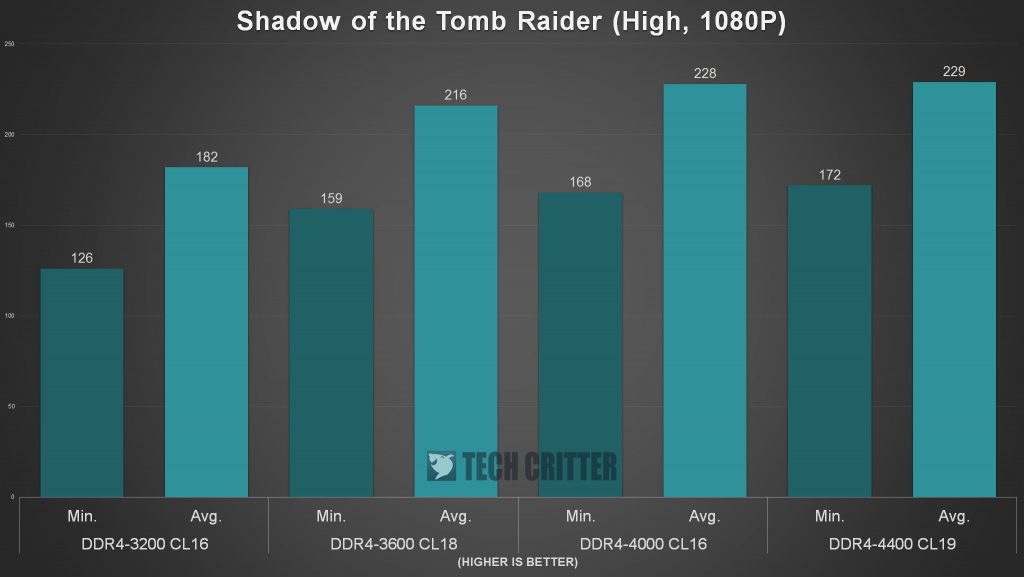
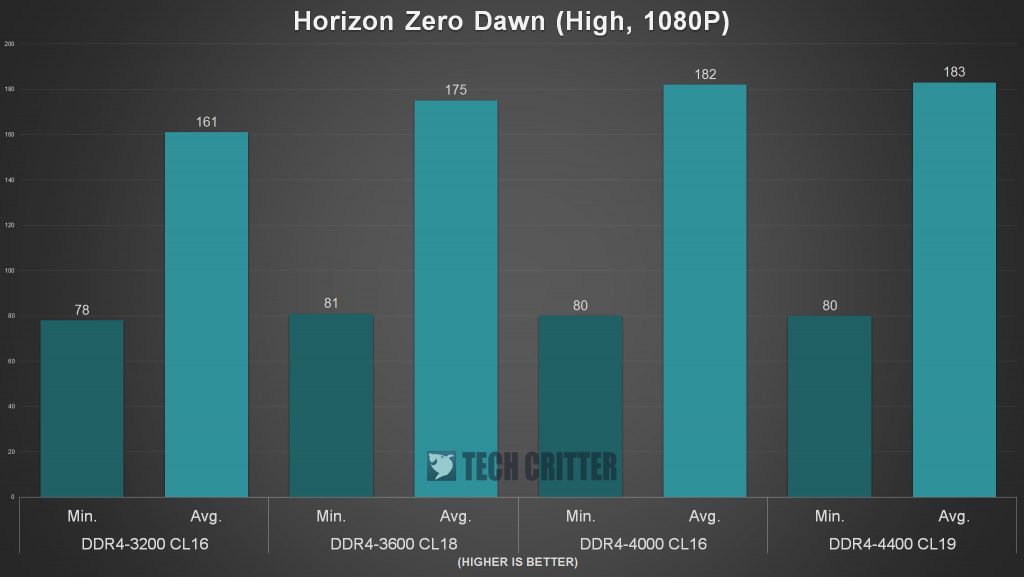
From the test results above, we can see some reasonable performance gains in the selected titles but DDR4-4000 is probably the setting that gives the most significant gain.
Final Thoughts
Overall, the B660M AORUS PRO AX DDR4 has most of the basic necessities for the Intel 12th gen Core processors and seems reasonable for users who don’t really want to go through the trouble of tweaking around with the settings. Due to the existing limitations such as the locked multiplier and system agent voltage on the non-K SKU CPUs, and locked voltage adjustments on B660 chipset motherboards, that are not many adjustments that can be done. But what really annoys me here is the lack of the debug LED on the B660M AORUS PRO AX DDR4, which can be found even on some lower-end B660 chipset motherboards from the competitors.
For the price of RM 899, it’s still pretty costly for a mid-tier motherboard in my point of view. While there are still reasonable features such as the vast number of USB ports, PCIe 4.0 support, 2.5GbE LAN and Wi-Fi 6 network support available on the B660M AORUS PRO AX DDR4 to justify its price, the lack of the debug LED is still somewhat a turn-off for me.
Pros
- Support memory overclocking
- Comes with a reasonable amount of USB ports
- 2.5GbE LAN and Wi-Fi 6
Cons
- Doesn’t support CPU overclocking
- Memory frequency is somewhat limited to DDR4-3200 for non-K 12th Gen Core processors because of the locked System Agent voltage
- Lack of debug LED for troubleshooting



